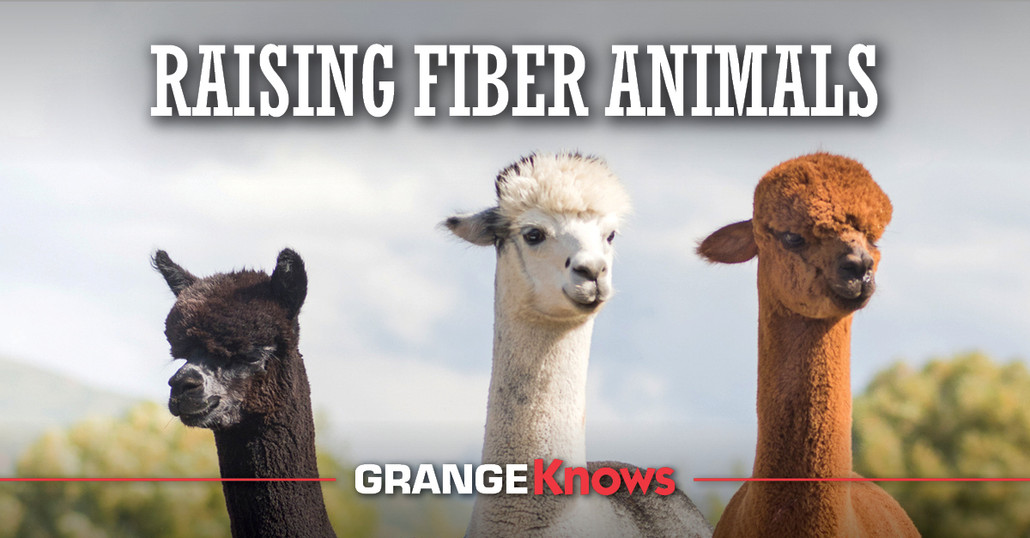
Raising Fiber Animals
Posted by Grange Co-op on 8th Apr 2025
If you’ve ever dreamed of crafting your own yarn or creating cozy woolen goods straight from the source, raising fiber animals might be the perfect homestead adventure for you! From soft and fluffy sheep to unique alpacas, fiber animals provide a sustainable way to produce natural fibers while also adding charm and personality to your farm or homestead.
At Grange Co-op, we are here to support you by providing the supplies and knowledge you need to succeed. Whether you’re new to raising fiber animals or just looking for helpful tips, we’ve got you covered!
What Are Fiber Animals?
Fiber animals are livestock that produce wool, fleece, or hair that can be spun into yarn or processed into fabric. Some of the most common fiber animals include:
- Sheep – Known for their wool, sheep come in many breeds, each producing different textures of fleece.
- Alpacas – These gentle animals produce soft and hypoallergenic fleece that is highly sought after.
- Goats – Angora and Cashmere goats produce high-quality fiber used for luxurious clothing and textiles.
- Rabbits – Angora rabbits produce incredibly soft fiber that can be harvested by gently brushing or shearing.
- Llamas – Similar to alpacas, llamas produce a coarser fleece often used for rugs and outerwear.
Each fiber animal has its own unique needs and care requirements, so it’s important to choose the best fit for your lifestyle and space.
Choosing the Right Fiber Animal for You
Before you bring home your first fiber animal, consider the following:
1. Space Requirements
- Sheep and goats need ample pasture space to graze and secure fencing.
- Alpacas and llamas require secure fencing and open areas to roam.
- Rabbits need smaller enclosures but still require proper ventilation, temperature regulation, and care.
2. Climate Considerations
- Some fiber animals, like sheep, can adapt to various climates.
- Alpacas and llamas prefer cooler weather and may need extra care in hot climates.
- Goats require shelter from extreme cold or wet conditions.
- Rabbits can be sensitive to the heat and cold.
3. Time and Commitment
- Fiber animals need regular feeding, grooming, and veterinary care.
- Some require shearing once or twice a year, while others need more frequent fiber collection.
By considering these factors, you can select a fiber animal that fits well with your homestead set-up and lifestyle.
Caring for Fiber Animals
Once you’ve chosen your fiber animals, it’s time to focus on their care. Here are some key aspects of raising healthy and happy fiber animals:
Nutrition and Feeding
- Provide high-quality hay, pasture, and supplemental grains as needed.
- Ensure access to fresh, clean water at all times.
- Offer mineral supplements specific to each species for optimal health.
Housing and Shelter
- Protect fiber animals from harsh weather with well-ventilated shelters.
- Secure fencing is essential, especially for goats and alpacas that love to explore.
- Keep enclosures clean to prevent parasites and maintain fiber quality.
Health and Wellness
- Schedule regular veterinary check-ups and vaccinations.
- Monitor for signs of illness, such as changes in appetite or behavior.
- Keep up with hoof trimming, parasite control, and dental care as needed.
Harvesting and Processing Fiber
The real fun begins when it’s time to harvest and process your fiber! Here’s how to turn raw fleece into usable material:
Shearing and Collection
- Sheep, alpacas, llamas, and Angora goats typically need to be sheared once or twice a year.
- Angora rabbits can be brushed or lightly trimmed every few weeks.
- Use proper shearing tools and techniques to avoid injuring the animal or damaging the fiber.
Cleaning and Carding
- After shearing, the fiber should be washed to remove dirt, grease, and debris.
- Carding (combing the fibers) helps separate and align them for spinning.
- Some fibers, like alpaca fleece, require minimal processing compared to sheep’s wool.
Spinning and Crafting
- Use a spinning wheel or drop spindle to turn cleaned fiber into yarn.
- Experiment with natural dyeing techniques to add color to your fibers.
- Knit, crochet, or weave your fiber into blankets, scarves, and more!
Processing fiber can be a fun and rewarding experience, allowing you to create handmade goods straight from your farm.
The Benefits of Raising Fiber Animals
Beyond producing high-quality wool and fleece, raising fiber animals comes with many benefits:
- Sustainability – Raising your own fiber animals reduces reliance on mass-produced textiles and supports ethical fiber production.
- Therapeutic Value – Many fiber animals, such as alpacas and rabbits, are gentle and calming to work with.
- Community and Income – Selling raw fiber, yarn, or handmade goods can provide an additional source of income for your homestead.
- Family Fun – Kids and adults alike love caring for and working with fiber animals, making it a great family-friendly endeavor.
Get Started with Fiber Animals Today!
If raising fiber animals sounds like an exciting venture, now is the perfect time to get started! Visit Grange Co-op for all your fiber animal needs, including feed, grooming tools, fencing supplies, and great advice.
We’re here to support your journey, whether you’re spinning your first skein of yarn or growing a thriving fiber farm. Happy homesteading!
